There are loads of arguments pro or con when it comes to discussing whether to aim for a tiller-steering in a yacht or to go for wheels. For some sailors, this appears to be a question of utmost importance judging by the level of emotion when a conversation hits that topic. For me, I always preferred the wheel when it comes to sailing, but I may have changed my mind on that. Here´s why …
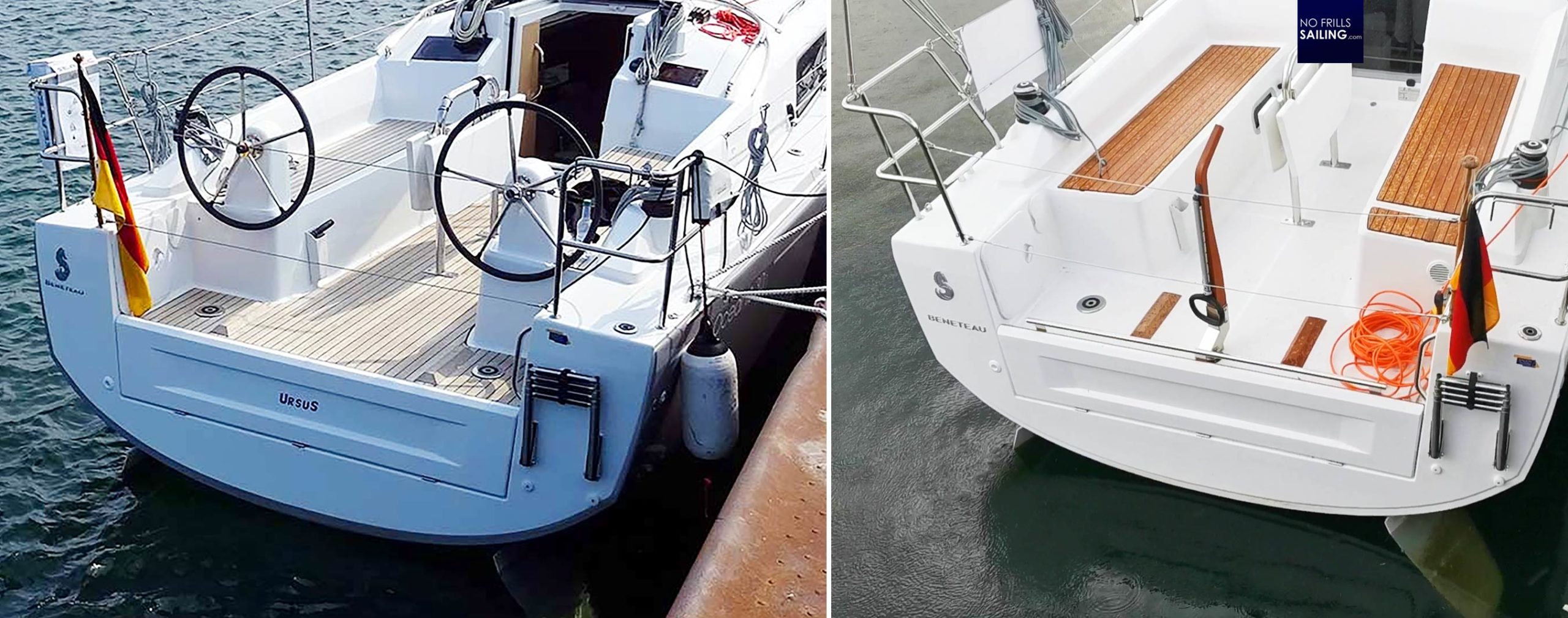
I do have an Oceanis 30.1 now available for our clients for sea trials and boosting sales. This boat is specced pretty much standard – in case of the steering system this means tiller. I know the 30.1 quite intimately as I have sailed the prototype 450 miles across the Baltic Sea to Sweden (you may browse all articles by clicking on #swedensailing here) and up until recently I thought that this little-big quick boat might become my new private boat as well. In this, I preferred the variant with the twin-wheel-option over standard tiller. Now, as I have spent three days sailing out in gusty Force 5 winds, I must say, I begin to understand the advantages of having a tiller.
General advantages and shortcomings of tiller and wheels-steered boats
Let´s look at wheels first. Well, of course they look way cooler, especially when made of composite. It´s that sleek, racy look which most clients seek and love. Steering a boat by wheels is also a lot more comfortable. Just sit on the coamings or wedge yourself in between the reeling and all it takes is a little effort to helm the boat – even for longer periods of time.
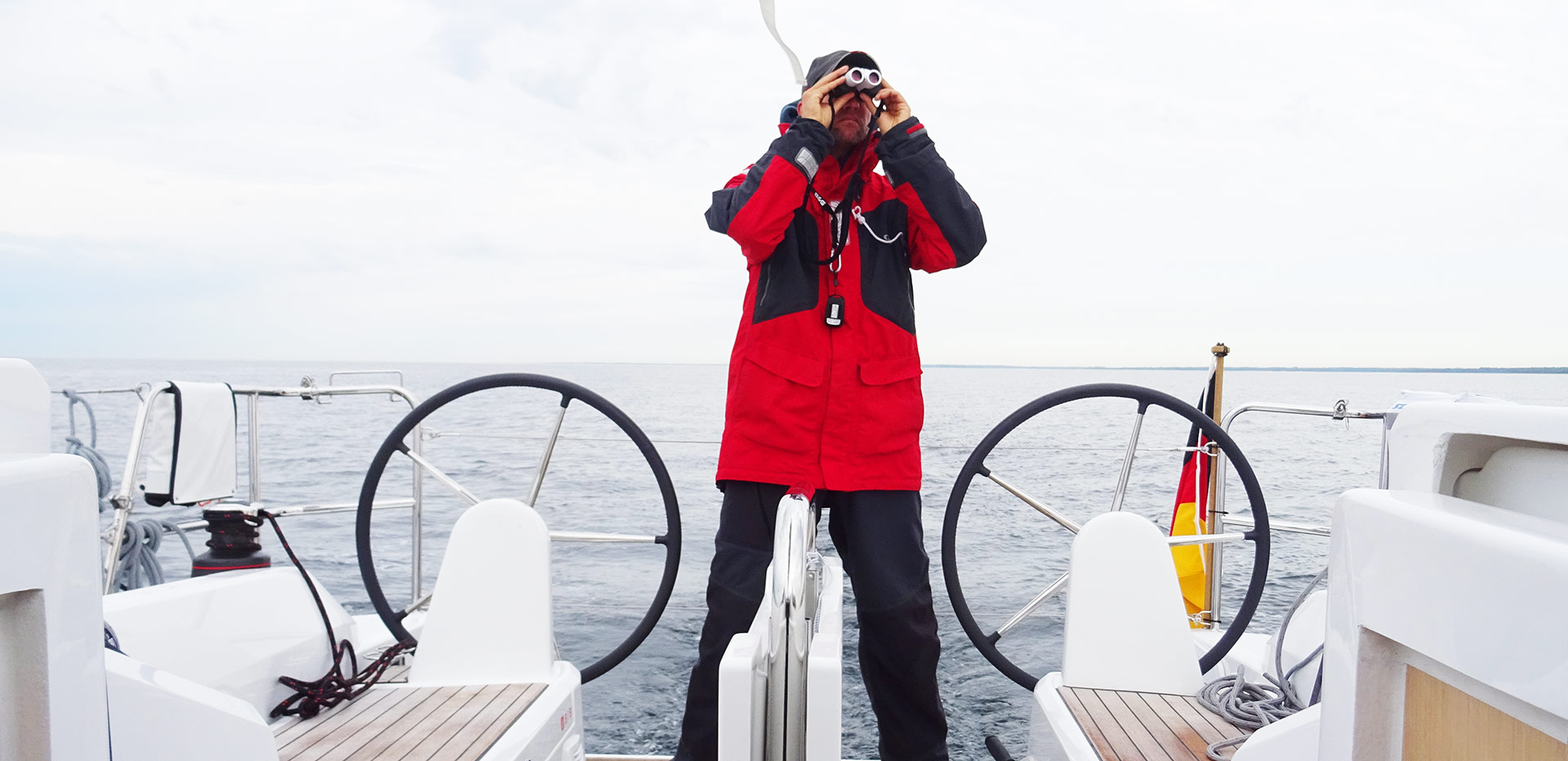
For many people, especially sailing rookies, helming a boat with wheels is also a lot easier to do: It´s like driving a car. You want to go left? Just turn the wheel to the left. Wanna go right? Turn the wheel right. It´s so easy that my 3 years old son only needed a quick one-minute-briefing á la “it´s like on your bobby car …” and off he went, helming the yacht. It´s a no brainer.
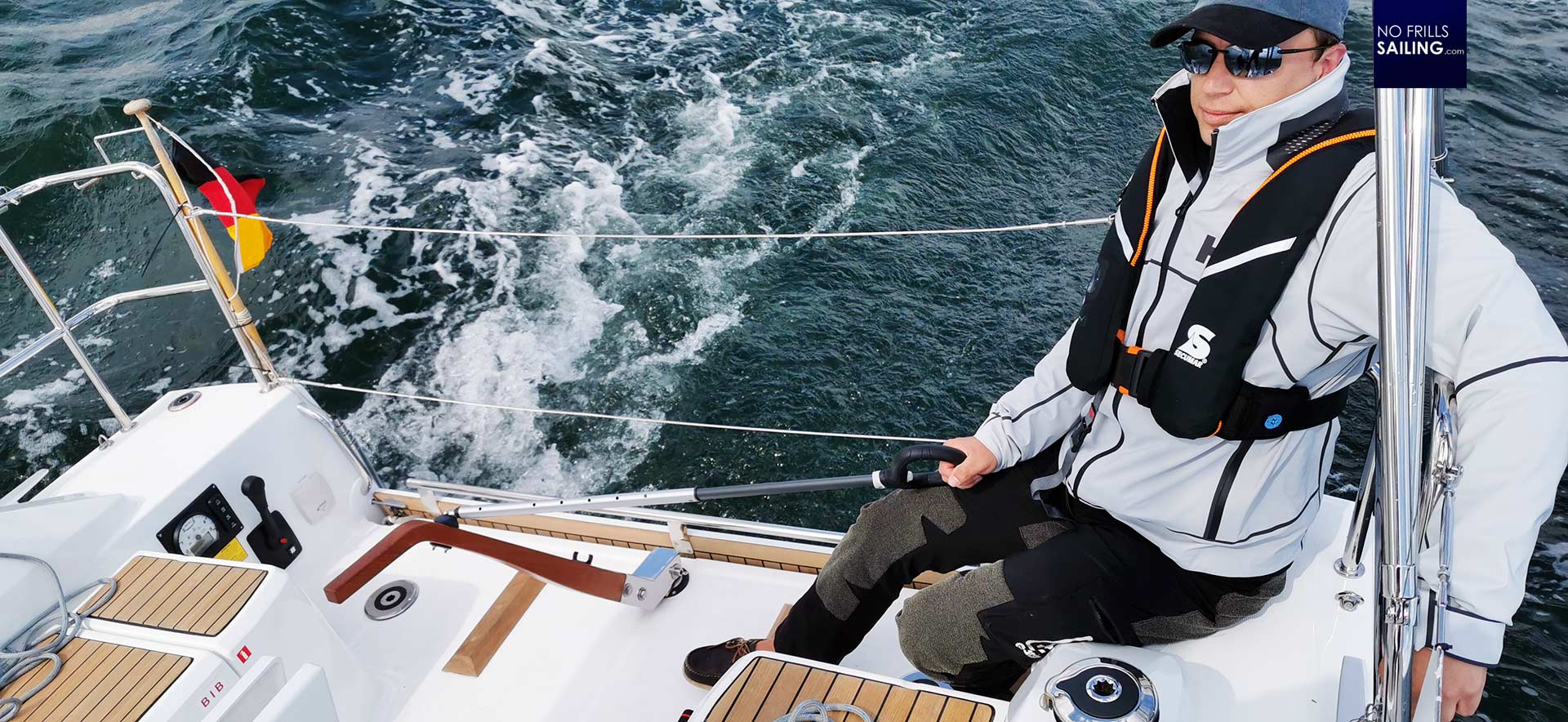
The story is different with a tiller: As long as you are not coming from a jolly boat, an Optimist or a Laser, 420 or something and have been grown up on boats with tiller steering, it takes a while to adapt: Want to go left? Push tiller to the right … the exact opposite. I have seen a lot of people having problems to get it right for the first time, especially because we have internalized steering things must be like steering a car. But I´ve tested it yesterday with a girl who was a guest on the boat and sat on tiller steering for the first time in her life: It took her exactly 10 minutes to being able to hold a steady course. So, that´s definitely no rocket science.
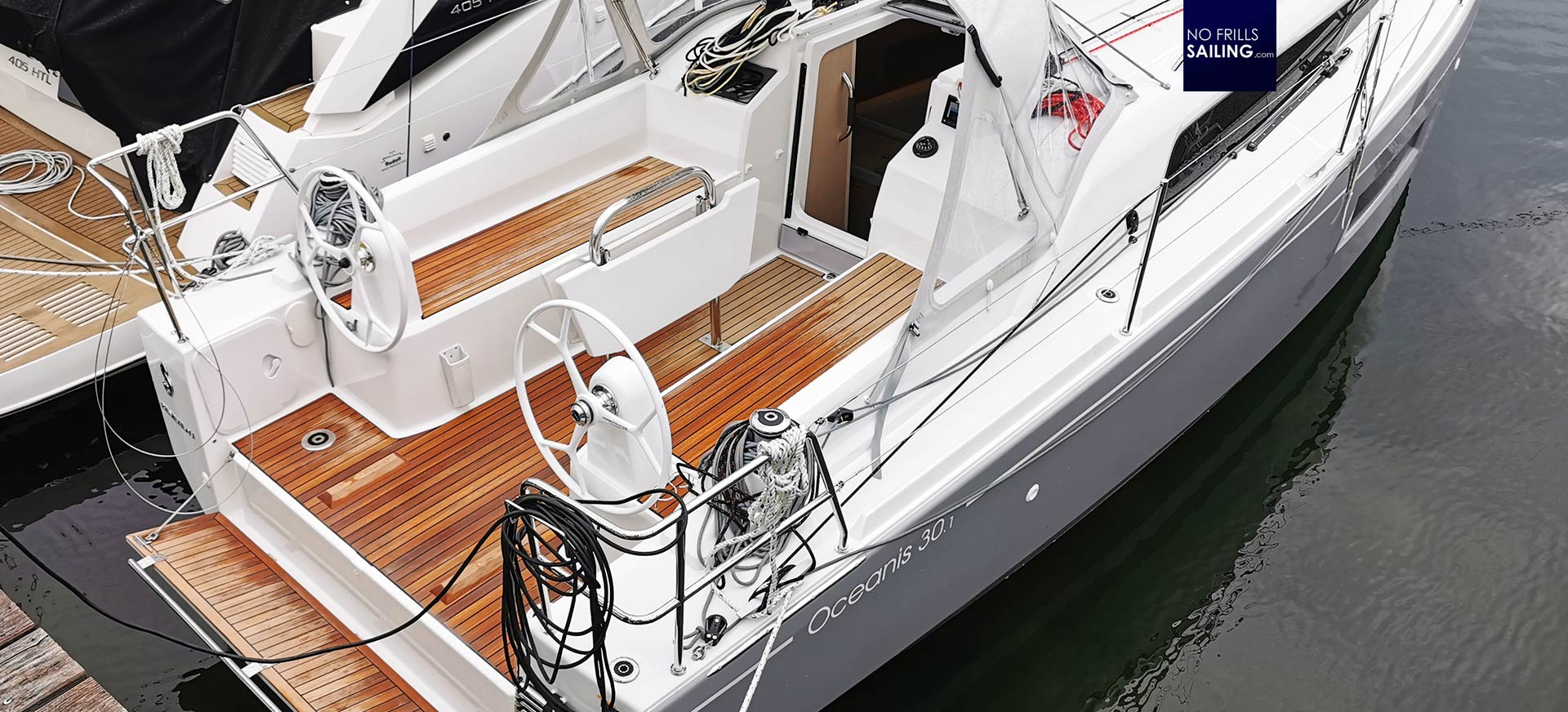
Wheels – from my point of view – do have the shortcoming of slower reaction time. It just takes longer to react to course changes or motions by the waves. Depending on the transmission of the mechanism, it really could take time to react fast when the boat is pushed off course: I´ve noticed that on my Atlantic trip and most recently during the transfer trip of the Oceanis 46.1 to Greece, when both automatic steering system and I myself had to put in hard efforts to quickly have counter-steering efforts in place to prevent broaching, for example. With a tiller, it´s a matter of seconds.
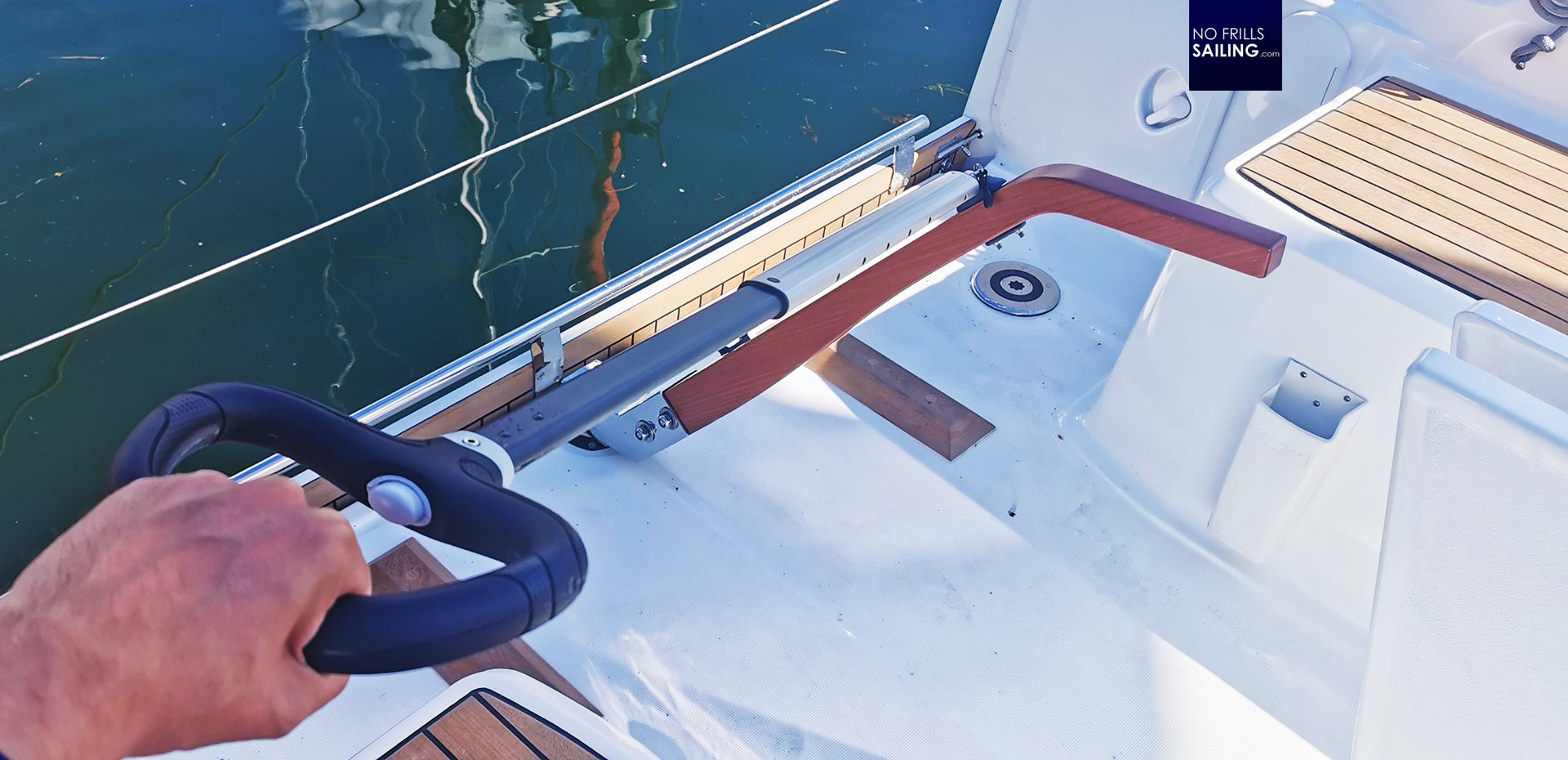
Tiller is also a lot fast when it comes to determine the rudder bearing – the boat simply goes where the top of the tiller is pointing at. So with one blink of an eye everyone aboard can clearly see in which direction rudders are currently steering the boat. Not so with a wheel: Even a marking for rudder midship cannot reveal the true bearing since the wheel could have turned full revelations. Since I have sailed both types of steering, I know it from firsthand experience – but always on different boats. Now, with the Oceanis 30.1 at hand, I can compare it directly, Let´s see what I´ve got here.
Direct comparison: Tiller vs. wheels on the Oceanis 30.1
First of all, have a look at the bare numbers: For this boat, the twin-wheels option is a 1.500 Euros (exVAT) option. For that equivalent of money you can afford the massive Teak in the cockpit. Or the budget for a three week sailing trip in the Baltic Sea. At the same time you will get a much simpler steering mechanism which is way easier to maintain – well, it´s practically maintenance-free – and no cables, quadrants, fine tuning or anything connected with the complex mechanics of a twin wheel-steering.

Second, and most obvious for me, is the huge amount of space saved when going for tiller steering, at least in the Oceanis 30.1 – when in harbour, tiller is tilted upwards and the whole aft area of the boat is free for utilization. Whereas with wheels you will always have the steering posts taking up space and the wheels themselves narrowing the passage to the bathing platform.
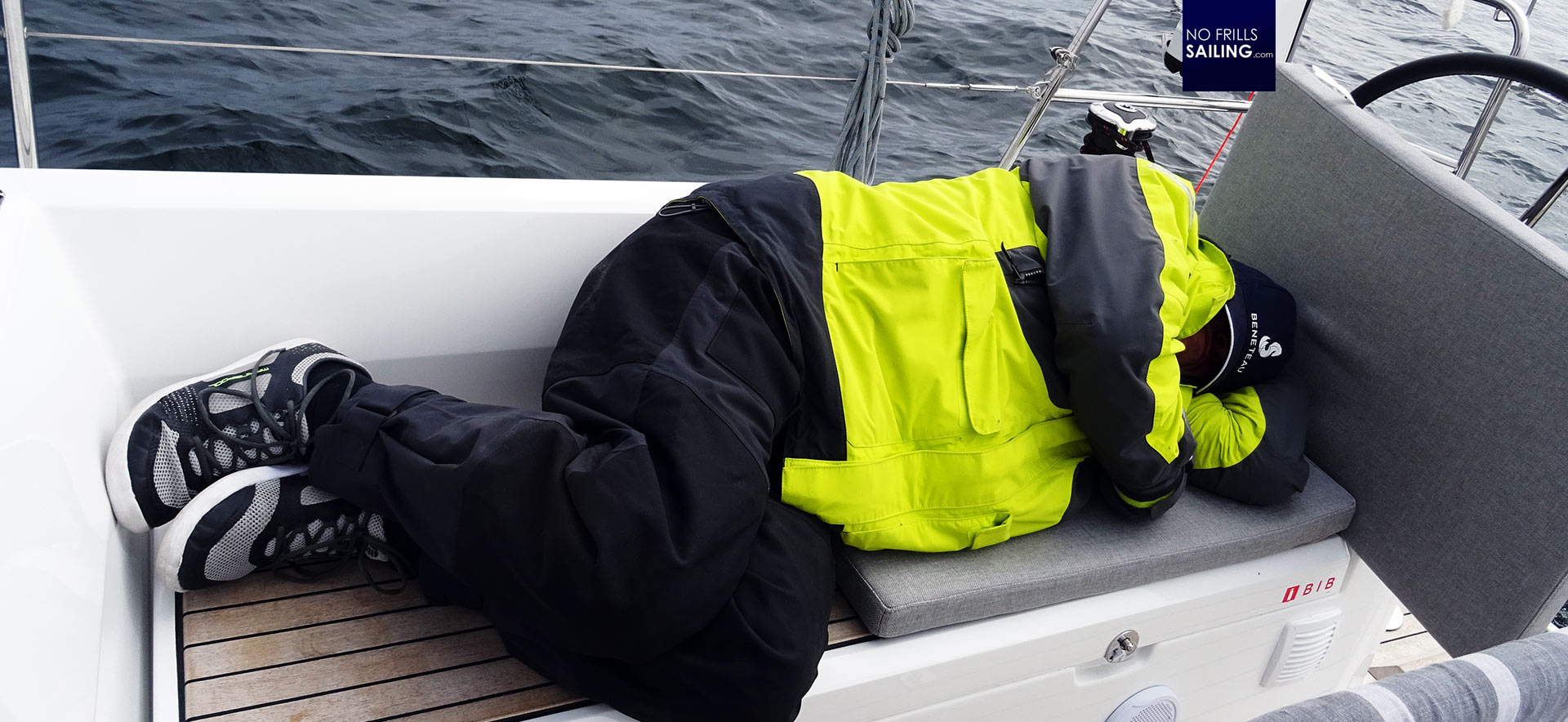
Another thing is the increase of space on the benches in the cockpit. It may look not much, but indeed it is. On the twin-wheels Oceanis 30.1 the benches are some 20 centimetres shorter, so laying down in the sun with stretching the full length of your legs is just not possible. On the tiller version there´s definitely the chance to put yourself into the sun and recline most comfortably. Perfect! But how does the steering feel?
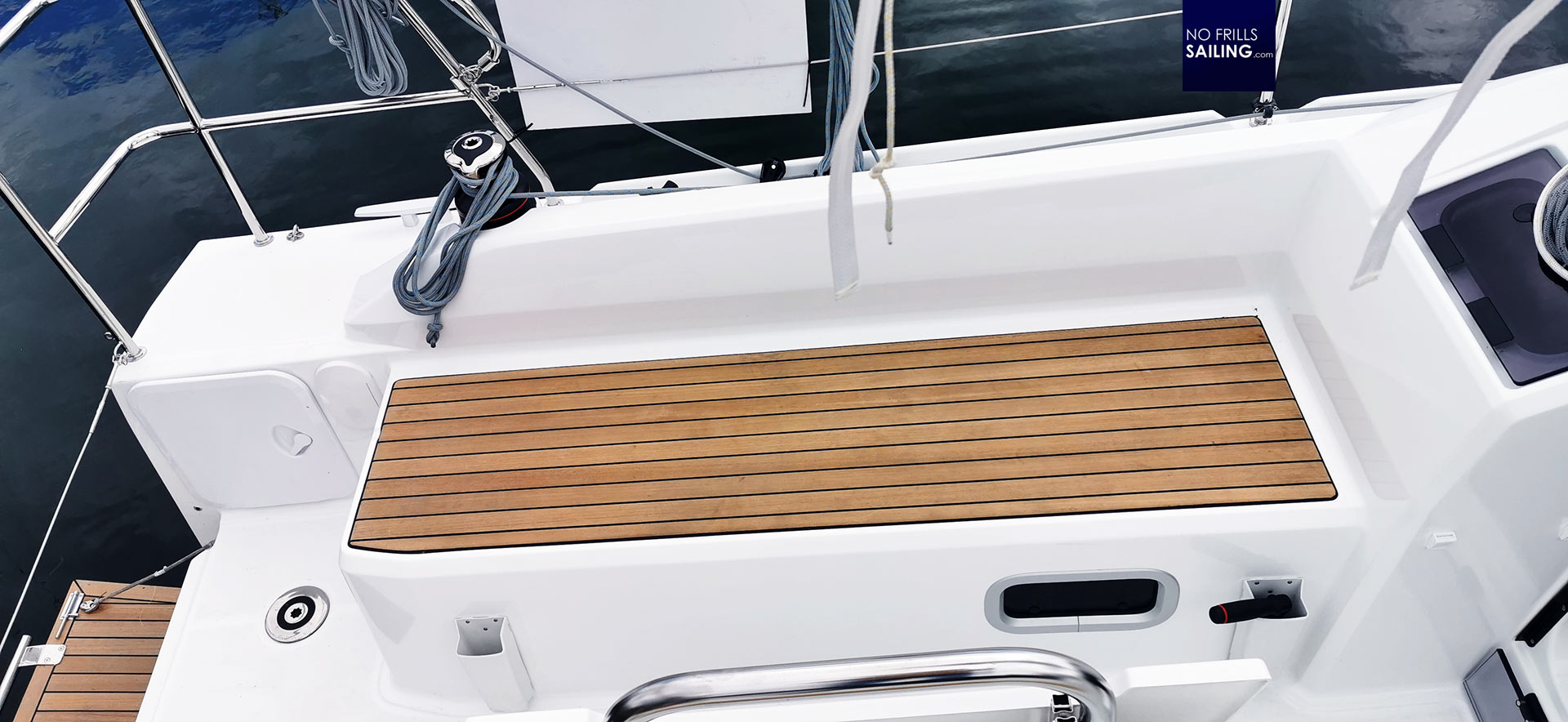
It´s a twin-bladed sword, at least when it comes to cruising boats. I must admit that I am a fan of automatic steering. In both versions the B&G NAC3-autopilot can be ordered and most sailors I know do rarely steer for longer periods of time. They usually have 10 to 20 minutes fun and then Mr. Auto takes over. But anyway, steering the Oceanis 30.1 by hand is a bliss – she is fast, very agile and responsive which one might not be seeing from her high freeboard appearance, but she is.
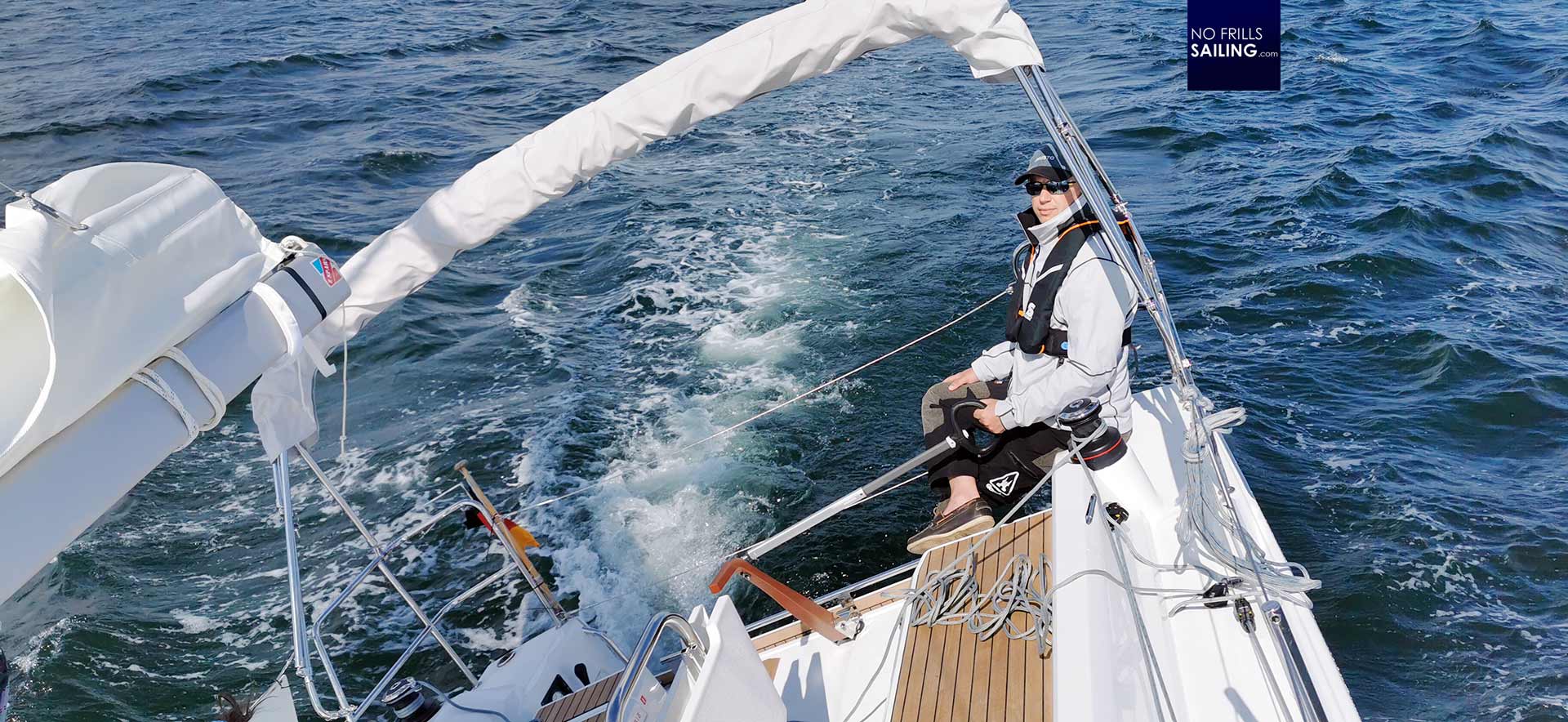
Of course, it´s way more effort needed to steer the boat with a tiller: The amount of muscular force needed to work the tiller is much higher, especially when steering the boat in excessive heeling with the Spinlock tiller handle – hours and hours of sailing will be wearing helmsman´s muscles and a sore arm on the next day is guaranteed. Anyways, standing or wedging oneself behind the wheels has a similar effect at least on my backbone and neck: It´s wear and tear as well. So, I guess that´s a draw.
Which way to go: Tiller or wheels?
Well, of course it´s always a matter of one´s personal taste and that will always be the case. But what I´ve learned from the past days by comparing directly the performance, comfort, pros and cons of wheel versus tiller on the Oceanis 30.1 – I´d honestly go for the tiller in this small boat. Why? Well, looking at the facts, the pros of the tiller steering are in my view in favor of the cons. The pros for the tille as well outnumber these of the wheels.
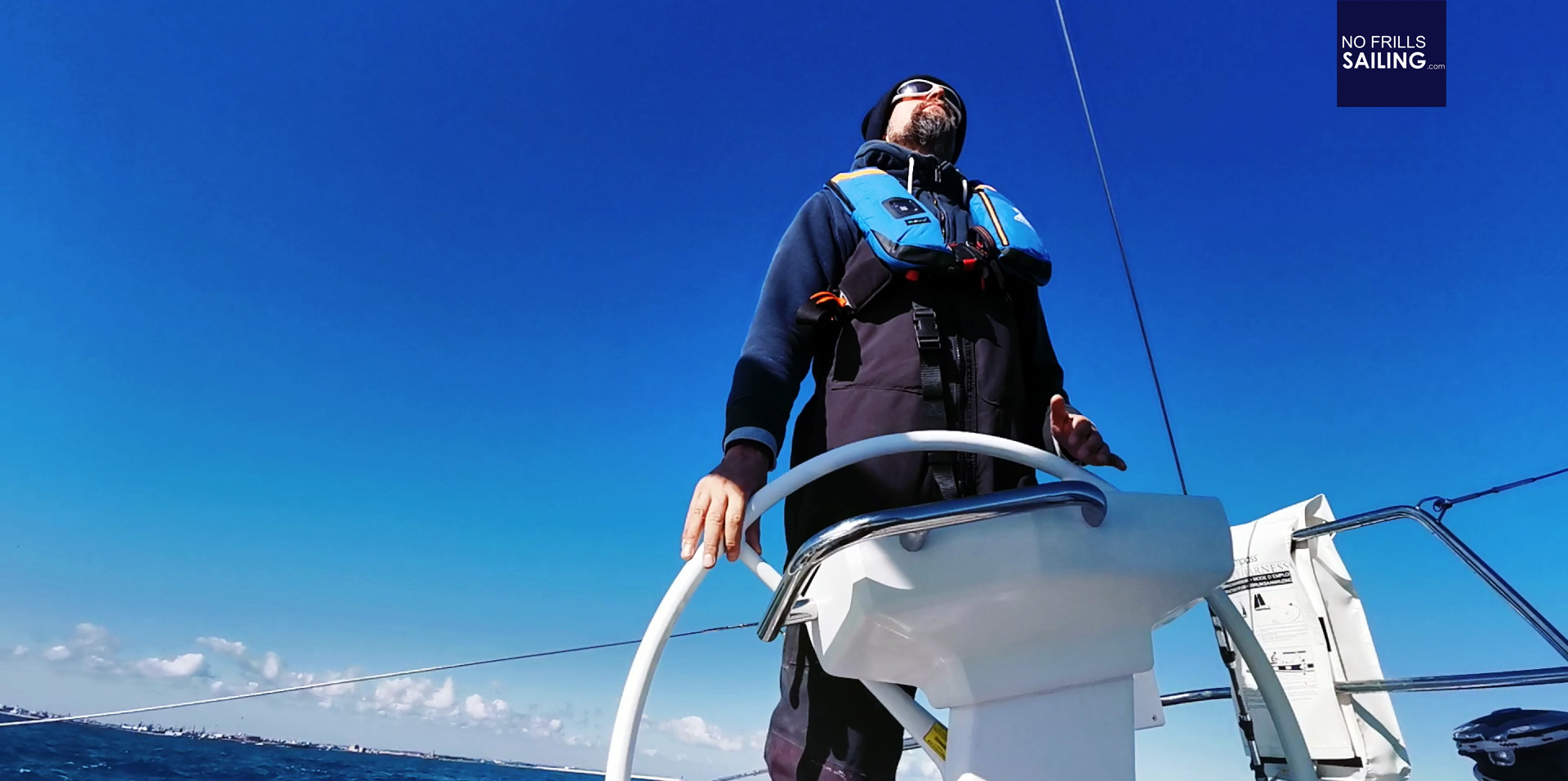
So if you seek a fast, agile sailing experience: go for the tiller. Be happy for the mones you have saved now and re-invest it into some other options, like a nice Gennaker or a Code 0 and enjoy ans a cherry on top much more free space in the cockpit: Which is a big thing on a small boat like the Oceanis 30.1. In this, I am very astonished that I have come to this conclusion now by myself – and it teaches me, that nothing insures a steady growing of your competence as a sailor that … actually sailing. Happy Sunday, folks.
You might also like to read:
Skipper´s essentials: How to keep a proper logbook
Skipper´s essentials: Electric toilets on sailing yachts?
Skipper´s essentials: How to tie a proper cleat hitch
